The name of this pub recalls the building’s former use as an old cinema, or ‘picture palace’, and also the nearby York Hotel.
Text about The York Palace.
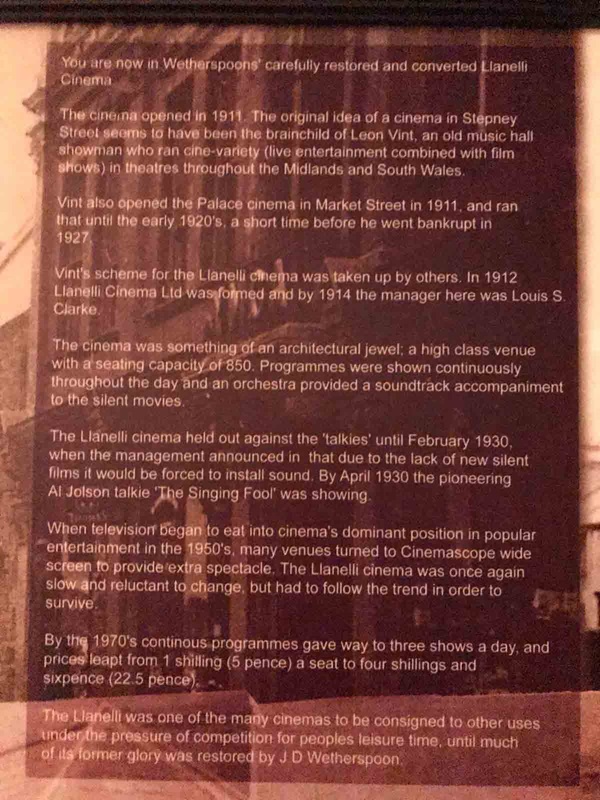
The text reads: You are now in a carefully restored and converted Llanelli Cinema.
The cinema opened in 1911. The original idea of a cinema in Stepney Street seems to have been the brainchild of Leon Vint, an old music hall showman who ran cine-variety (live entertainment combined with film shows) in theatres throughout the midlands and south Wales.
Vint also opened the Palace cinema in Market Street in 1911, and ran that until the early 1920s, a short time before he went bankrupt in 1927.
Vint’s scheme for the Llanelli cinema was taken up by others. In 1912 Llanelli Cinema Ltd was formed and by 1914 the manager here was Louis S Clarke.
The cinema was something of an architectural jewel; a high class venue with a seating capacity of 850. Programmes were shown continuously throughout the day and an orchestra provided a soundtrack accompaniment to the silent movies.
The Llanelli cinema held out against the ‘talkies’ until February 1930, when the management announced in that due to the lack of new silent films it would be forced to install sound. By 1930 the pioneering Al Jolson talkie The Singing Fool was showing.
When television began to eat into cinema’s dominant position in popular entertainment in the 1950s, many venues turned to Cinemascope wide screen to provide extra spectacle. The Llanelli cinema was once again slow and reluctant to change, but had to follow the trend in order to survive.
By the 1970s continuous programmes gave way to three shows a day, and prices leapt from 1 shilling (5 pence) a seat to four shillings and sixpence (22.5 pence).
The Llanelli was one of the many cinemas to be consigned to other uses under the pressure of competition for peoples leisure time, until much of its former glory was restored by J D Wetherspoon.
An illustration, prints and text about the history of Llanelli.
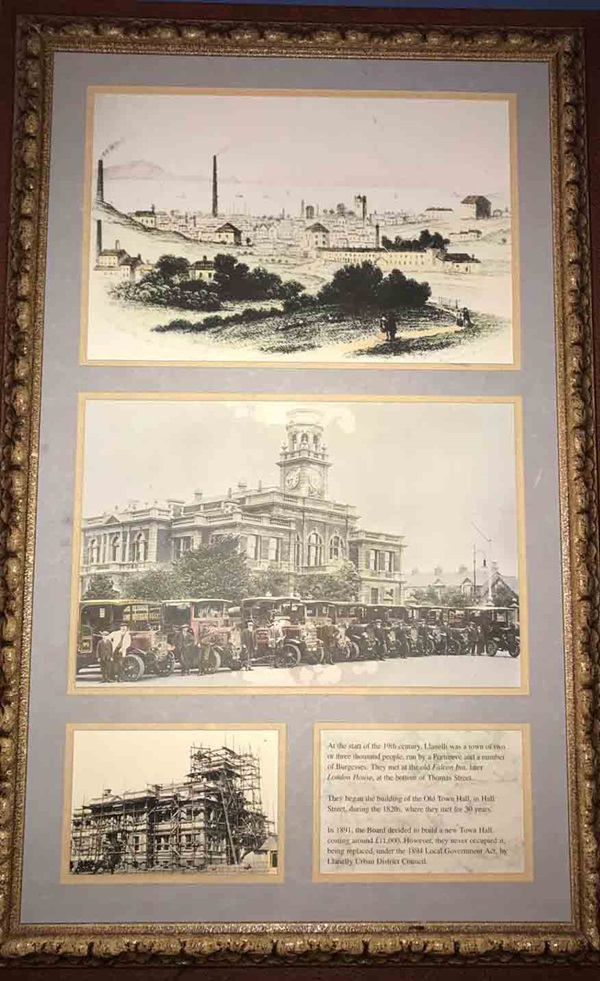
The text reads: At the start of the 19th century, Llanelli was a town of two or three thousand people, run by a Portreeve and a number of Burgesses. They met at the old Falcon Inn, later London House, at the bottom of Thomas Street.
They began the building of the Old Town Hall, in Hall Street, during the 1820s, where they met for 30 years.
In 1891, the board decided to build a new Town Hall, costing around £11,000. However, they never occupied it, being replaced, under the 1894 Local Government Act, by Llanelly Urban District Council.
Illustrations and text about the Borough of Llanelly.
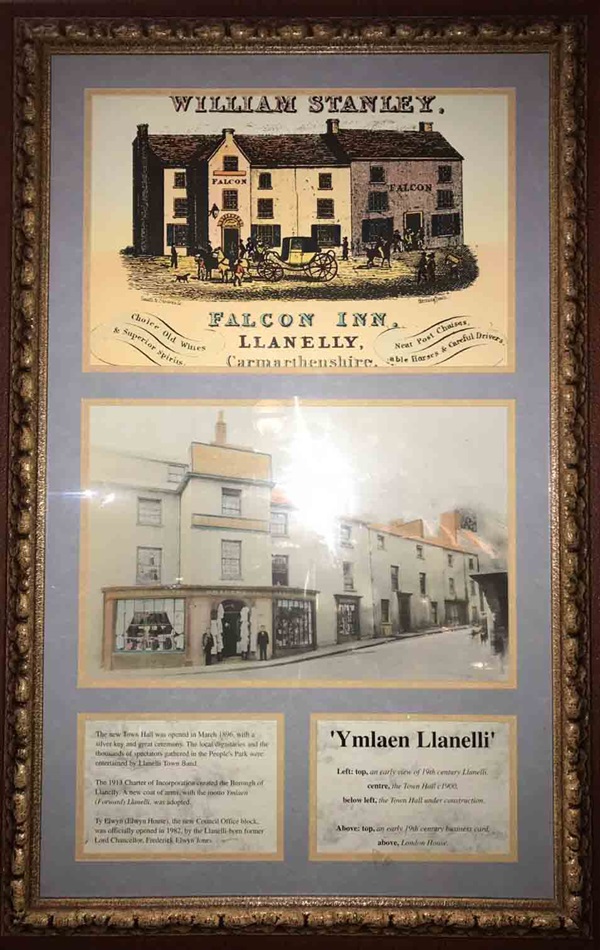
The text reads: The new Town Hall was opened in March 1896, with a silver key and great ceremony. The local dignitaries and the thousands of spectators gathered in the People’s Park were entertained by Llanelli Town Band.
The 1913 Charter of Incorporation created the Borough of Llanelly. A new coat of arms, with the motto Ymlaen (Forward) Llanelli, was adopted.
Ty Elwyn (Elwyn House), the new Council Office block, was officially opened in 1982, by the Llanelli-born former Lord Chancellor, Frederick Elwyn Jones.
Left: top, an early view of 19th century Llanelli, centre, the Town Hall c1900, below left, the Town Hall under construction
Above: top, an early 19th century business card, above, London House.
A print and text about entertaining Llanelli.
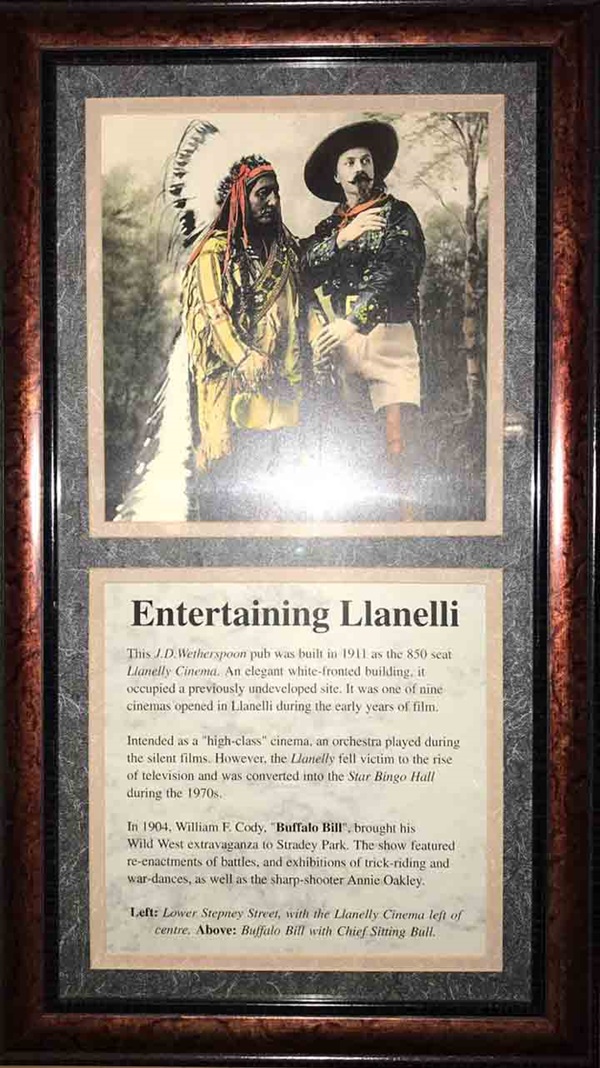
The text reads: This J D Wetherspoon pub was built in 1911 as the 850 seat Llanelly Cinema. An elegant white fronted building, it occupied a previously underdeveloped site. It was one of nine cinemas opened in Llanelli during the early years of film.
Intended as a high class cinema, an orchestra played during the silent films. However, the Llanelly fell victim to the rise of television and was converted into the Star Bingo Hall during the 1970s.
In 1904, William F Cody, ‘Buffalo Bill’, brought his Wild West extravaganza to Stradey Park. The show featured re-enactments of battles, and exhibitions of trick-riding and war dances, as well as the sharp shooter Annie Oakley.
Left: Lower Stepney Street, with the Llanelly Cinema left of centre
Above: Buffalo Bill with Chief Sitting Bull.
Illustrations and text about John Wesley.
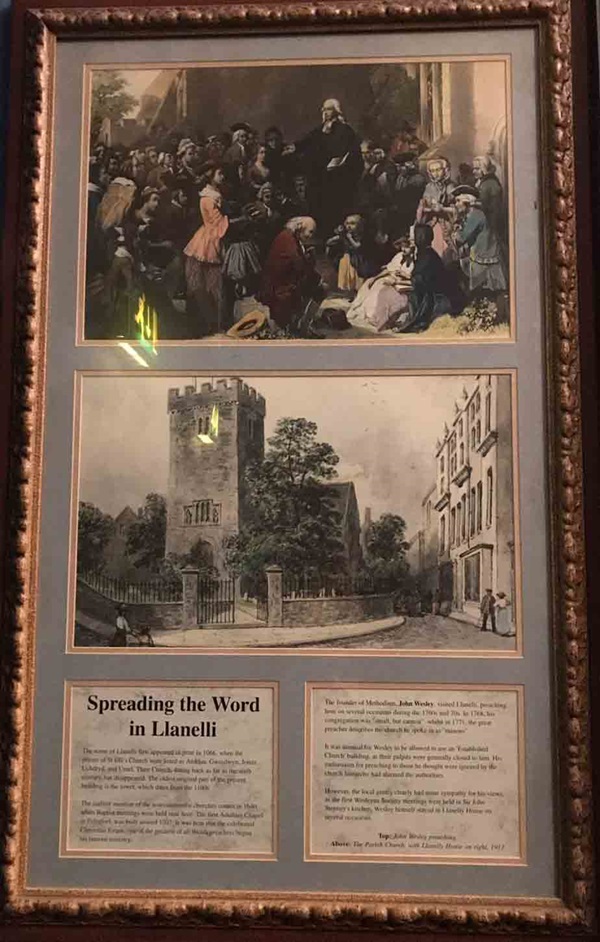
The text reads: The name of Llanelli first appeared in print in 1066, when the priests of St Elli’s Church were listed as Aeddau, Gwaudwyn, Jonas, Uchdryd and Urnel. Their church, dating back as far as the sixth century, has disappeared. The oldest original part of the present building is the tower, which dates from the 1100s.
The earliest mention of the non-conformist churches comes in 1640, when Baptist meetings were held near here. The first Adullam Chapel in Felinfoel, was built around 1707. It was here that the celebrated Christmas Evans, one of the greatest of all Welsh preachers began his famous ministry.
The founder of Methodism, John Wesley, visited Llanelli, preaching here on several occasions during the 1760s and 70s. In 1768, his congregation was “small, but earnest”, whilst in 1771, the great preacher describes the church he spoke in as “ruinous”.
It was unusual for Wesley to be allowed to use an ‘established church’ building, as their pulpits were generally closed to him. His enthusiasm for preaching to those he thought were ignored by the church hierarchy had alarmed the authorities.
However, the local gentry clearly had some sympathy for his views, as the first Wesleyan Society meetings were held in Sir John Stepney’s kitchen. Wesley himself stayed in Llanelly House on several occasions.
Top: John Wesley preaching
Above: The parish church, with Llanelly House on right, 1913.
Internal photographs showing some of the original cinema design features.
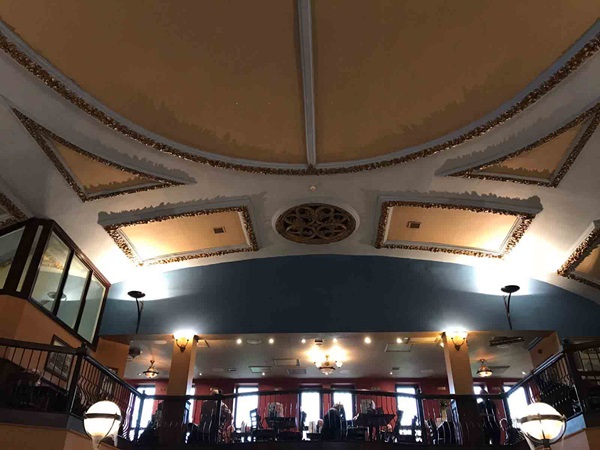
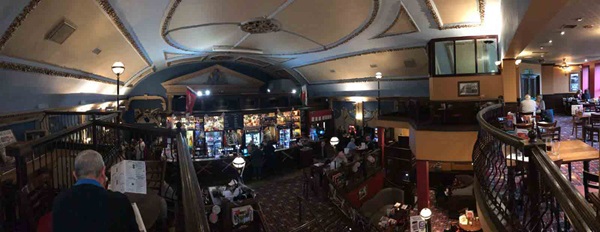
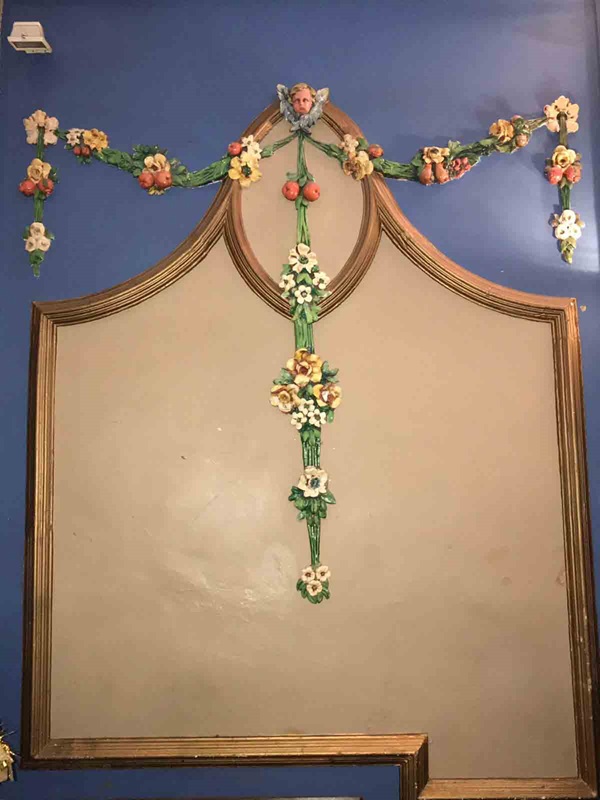
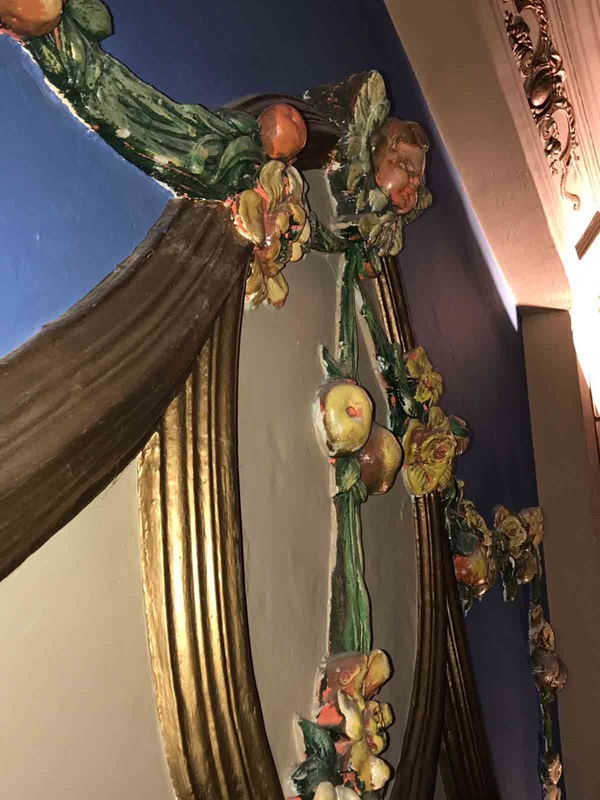
External photograph of the building – main entrance.
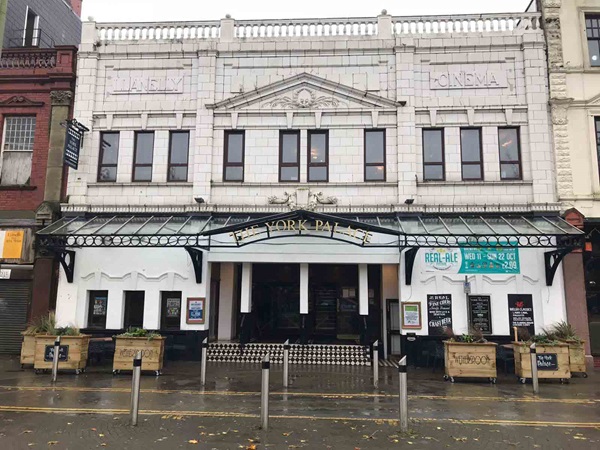
If you have information on the history of this pub, then we’d like you to share it with us. Please e-mail all information to: pubhistories@jdwetherspoon.co.uk